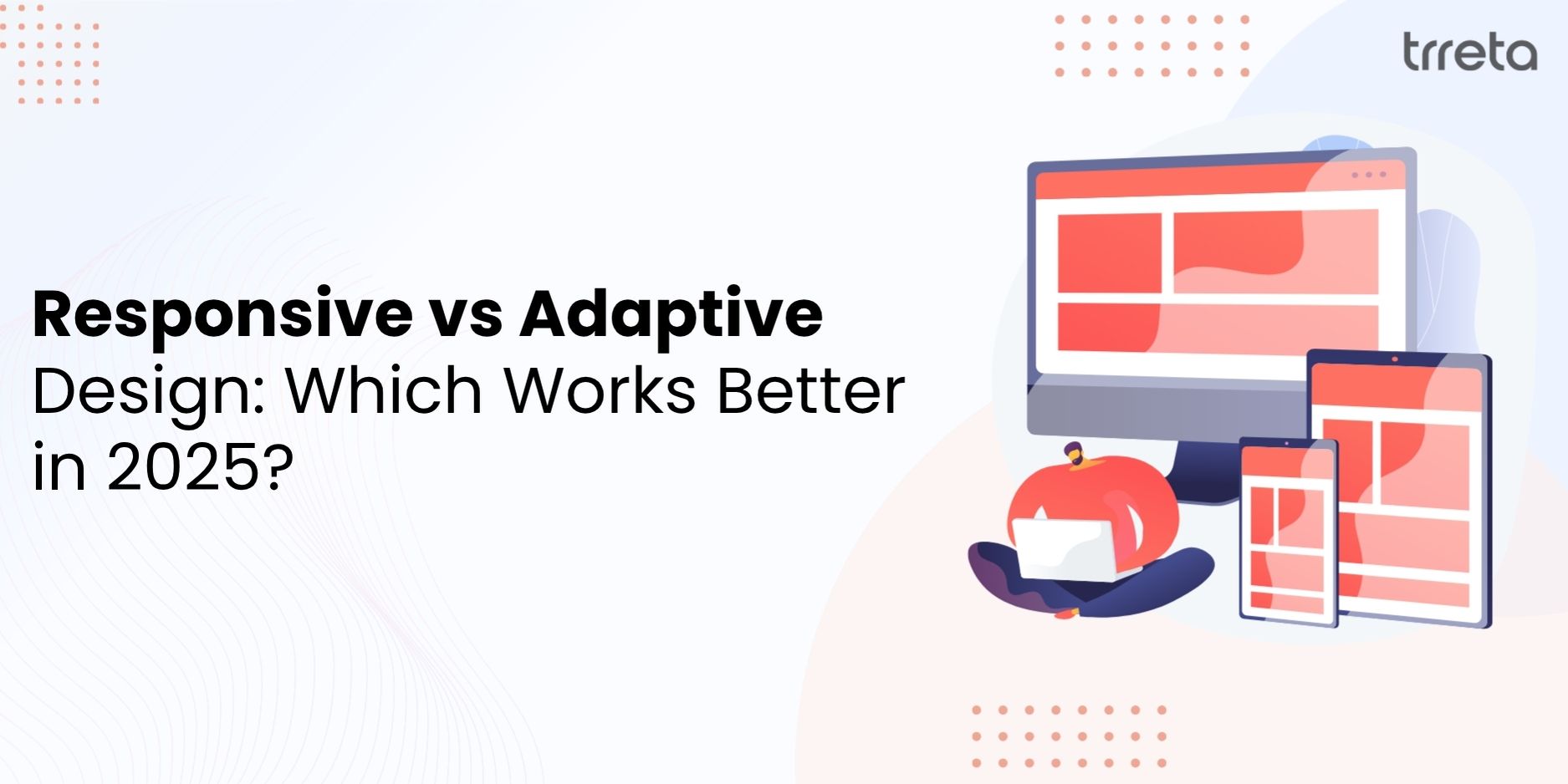In 2025, the web isn’t just about desktops and smartphones anymore. We’re talking foldable phones, ultra‑wide monitors, smart TVs, AR/VR interfaces, and wearables. The days of designing for a few screen sizes are long gone. This makes the choice between responsive and adaptive design more critical than ever—but also more nuanced. Let’s break it down.
Understanding the Basics
Before we argue which is better, let’s define the two approaches:
Responsive Design: A single flexible layout that adjusts fluidly to any screen size. Think of it as water filling the container it’s in. CSS media queries, fluid grids, and flexible images allow your site to resize dynamically, giving users a consistent experience across devices.
Adaptive Design: Multiple fixed layouts tailored to specific screen sizes or devices. The site detects the device and serves a version optimized for that screen. It’s like having multiple outfits ready for different occasions—perfect fit, but only for known scenarios.
Both approaches aim to make websites usable and visually appealing on any device, but their philosophy differs: responsive emphasizes flexibility, adaptive emphasizes precision.
The Web Landscape in 2025
Here’s why this debate matters more than ever:
Explosion of Devices: Foldables, dual‑screen devices, large monitors, and smart appliances mean you can’t just plan for 3–4 screen widths anymore.
Performance Matters More: Google’s Core Web Vitals, user patience, and mobile-first indexing make fast, lightweight, and efficient design essential.
Mobile-First Is Standard: Even corporate or SaaS products must prioritize mobile usability first, then scale up.
CSS Is Smarter: Container queries, responsive components, and fluid typography allow designers to build layouts that adapt not just globally, but within specific components.
User Expectations Are Higher: Accessibility, dark/light mode, motion preferences, and personalized experiences are no longer optional—they’re expected.
Comparing Responsive and Adaptive in 2025
|
Aspect |
Responsive |
Adaptive |
| Flexibility | Automatically adjusts to unknown screen sizes. Future-proof against new devices. | Fixed templates for specific devices; excellent for known targets but less flexible for new or unusual screens. |
| Performance | Single codebase simplifies caching, but can send heavier assets to all devices. | Can serve optimized assets per device, improving load times on targeted screens. |
| Maintenance | Easier to maintain; one codebase for all devices. | More maintenance overhead due to multiple layouts/templates. |
| User Experience | Consistent experience across devices. | Highly tailored experience; can optimize for specific interactions and screen sizes. |
| Cost & Development Time | Faster to develop; fewer resources needed. | Slower to develop; requires more testing and ongoing maintenance. |
| SEO | Single URL per content, ideal for search engines. | Risk of duplicate content if not handled carefully; multiple versions can complicate SEO. |
When Responsive Wins
Responsive design is often the better choice when:
- Your audience comes from a wide variety of devices.
- You want lower development and maintenance costs.
- SEO and discoverability are a priority.
- Future devices and form factors are unpredictable.
A responsive approach also benefits smaller teams or projects with tight deadlines. One codebase, one testing cycle, one deployment stream—simplicity matters.
When Adaptive Wins
Adaptive design shines when:
- You have a product heavily used on known devices (tablets, in-store kiosks, TVs).
- UX precision is critical for conversion or engagement.
- Performance on targeted devices outweighs flexibility.
- You’re willing to invest in multiple layouts for a superior experience.
Adaptive layouts allow pixel-perfect control. For example, an e-commerce site that knows 70% of its revenue comes from tablets may benefit from an adaptive tablet version that simplifies checkout.
The Hybrid Approach: The Smartest Path in 2025
Here’s the reality: purely responsive or purely adaptive is rarely ideal anymore. A hybrid strategy often delivers the best results:
-
Build a responsive foundation that covers all devices fluidly.
-
Identify key breakpoints where user experience matters most.
-
Add adaptive tweaks: optimized images, component adjustments, or even alternate layouts for high-value devices.
This gives you the flexibility of responsive design while leveraging the precision of adaptive design where it counts.
Performance & SEO Considerations
In 2025, a beautiful layout isn’t enough. Here’s what you need to keep in mind:
- Responsive: Optimize images and assets to prevent unnecessary load. Use lazy loading, compression, and modern formats like WebP or AVIF.
- Adaptive: Ensure consistent content and metadata across versions to avoid SEO penalties. Use canonical tags and structured data wisely.
- Both approaches should prioritize Core Web Vitals, accessibility, and fast load times.
Conclusion: No Absolute Winner
Here’s the bottom line:
- Responsive design is generally safer, more maintainable, and future-proof. It’s ideal for content-heavy websites, blogs, marketing sites, and projects with diverse users.
- Adaptive design works when precision matters—apps, SaaS dashboards, e-commerce sites targeting specific devices.
- Hybrid is the real winner: responsive foundation plus selective adaptive tweaks gives you flexibility, speed, and a tailored experience.
In 2025, flexibility, performance, and accessibility drive the decision more than a simple “responsive vs adaptive” debate. Design for the user, test with real devices, optimize for performance, and let data guide your tweaks.




